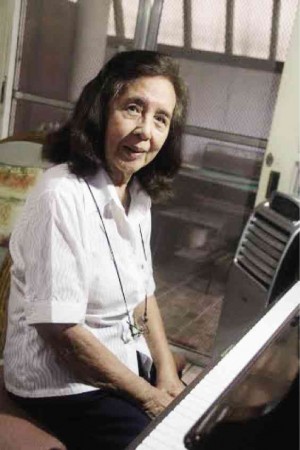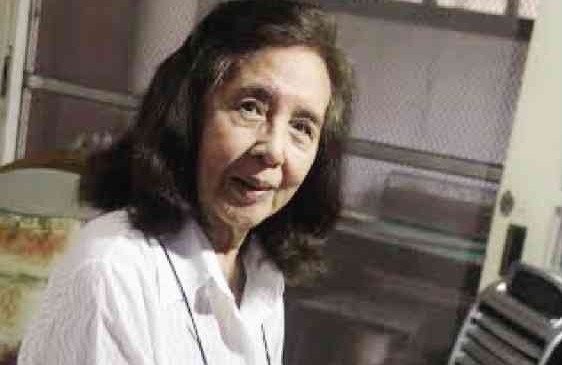
When Pilar Benavides Estrada joined the Manila Symphony Orchestra (MSO) in 1945, she was only 15, the youngest member to be part of its first post-liberation concert mounted in the ruins of Santa Cruz Church.
The historic concert, under conductor Dr. Herbert Zipper, was held on May 9, 1945.
Seventy years years later, as part of the anniversary of Philippine Liberation and the end of World War II, MSO did a reprise last March 13 of the 1945 production, serenading the audience with Beethoven’s Symphony No. 3 (Eroica) and Dvorak’s New World Symphony.
Attending the reenactment concert was Estrada, who at 84 years old remains the only known living Filipino survivor who took part in that concert. The oldest living foreign survivor is American Earl Smith, who played the clarinet in 1945.
Little practice
Estrada said she was assigned as one of the second violins in the 1945 concert, whose audience was composed mostly of enlisted American soldiers. But the production put great pressure on her, since she said she had only a little over a year of training in playing the violin.
“It was during the Japanese time when I started studying the violin,” she told the Inquirer. “But we had to evacuate to Laguna. In 1945, during the liberation, we went back to Manila. I was only a beginner in violin. I did not have much practice.”
When she got back to Manila, she heard about the audition for MSO. But when she phoned her friend, she learned that she had missed the audition, which ran for 10 days.
Fortunately, her mother’s cousin referred her to Zipper, who asked her to play. She played Habanera Filipina No. 2 by Ernesto Vallejo because that was the only piece she knew how to play then.
“[Habanera Filipina No. 2] was the only piece I knew how to play because I was just a beginner then,” she said. “I didn’t know if he (Zipper) liked it or not. After that, he asked me to play a piece that would be played for the concert. I did not know how to play spicatto, but fortunately I had sharp ears. I just started playing it. Right there and then, he accepted me to the orchestra. This was the first time I became a part of the orchestra.”
She was already behind rehearsals. When she got into the orchestra, they were already preparing for the concert. She had to rehearse every day.
“The very first time I heard the orchestra playing with me, it gave me goose bumps,” she said. “I said to myself, how beautiful.”
Family of musicians
Estrada came from a family of musicians. Her mother was a soprano who also taught piano lessons. One of her sisters was a singer, the other was a pianist.
She taught herself how to play the piano by listening to her mother play. But it was her mother who pushed her to learn violin.
“I had two sisters; one was a singer, and the other one was a pianist,” she said. “My mother said she wanted me to play something different, so she told me to learn violin instead. But I only knew one woman violinist. I thought that violins were only for men.”
Her mother hired a teacher for Estrada. But she was not too enthusiastic about learning.
“Because I did not want to play the violin, I did not learn anything in one month,” she said. “My professor told my mother to find me another teacher because he cannot teach me. I was only 13 or 14 then.”
Her mother got her another teacher. This time, the teacher was a strict one. “I was really scared. But in just one month, I already knew how to play.”
Estrada recalled she played with the orchestra four days a week. She and her mother would ride a six-wheeler truck to rehearsals and concerts. But because she was little, the American soldiers would hoist her up to the truck.
“I was in high school then,” she said. “But because of the orchestra, my schedule was pretty hectic.”
She played for MSO for two years, until someone got her into recording.
She enrolled in University of the Philippines back when it was still located along Taft Avenue. But when it moved to Diliman, Quezon City, her mother transferred her to University of Santo Tomas where she graduated from the Conservatory of Music in 1953. She married her husband, whom she met in UP, right after graduation.
For Estrada, orchestra-playing in the Philippines is active as before. But she noted that young musicians are distracted in the Digital Age.
“A lot of musicians today are doing many things at once,” she said. “Back in our time, we did not have any distractions. We were devoted to rehearsing every day.”












































